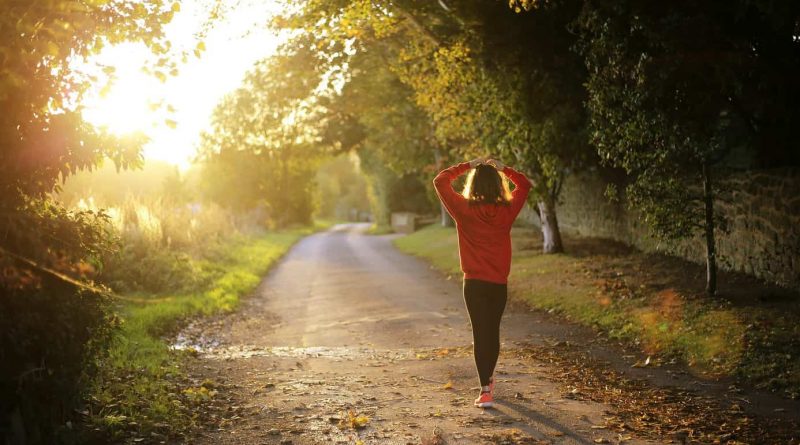Be fit into old age – tips for a long and agile life
There seem to be huge differences in sport between competitive athletes and the 100-year-old residents of Japan. While some are extremely fit and try to get the last percent more performance out of their bodies, others lead a relaxed life with their families, with moderate activity and natural food.
Would you like to know how you can combine the best of both worlds? How can you be fit and live long, in a sustainable and healthy way? How you can use your body for a lifetime and rely on it, with good performance in sports and still resilient and flexible in old age?
Be fit and flexible all your life – into old age
Many people who are active in sports and many competitive athletes enjoy being able to rely on their bodies and test their own limits – but do not believe that they can still rely on their bodies in old age as they do now do.
They believe that at some point the joints no longer play their part, the cardiovascular system is busy and the bones become unstable.
How can you be fit, possibly manage your marathon or triathlon and at the same time become as old as the natives of the so-called Blue Zones , where the oldest people in the world live?
I’ll show you! Because it is quite possible, with a little exercise physiology, to experience a lot of sport and stress in a sustainable and healthy way – now and at the age of 80 or 100 years too.
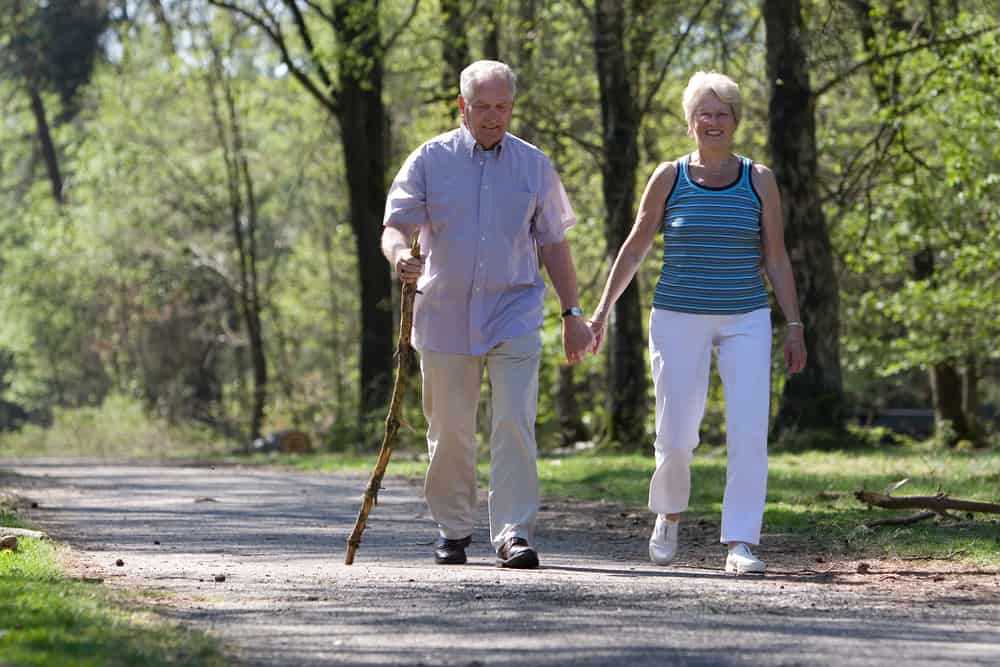
… So that you can still be fit, vital and physically active at an advanced age
You don’t have to wear out the body like a saw that is no longer sharp at some point. Our goal is to use this saw for a lifetime without it getting dull.
We divide the contribution into balance, metabolism, flexibility and endurance and strength in order to obtain a comprehensive system that (supports) you for a lifetime:
1. Balance
In order to stay active for life, you should train your balance. That doesn’t sound very intuitive at first, but studies show that balance is one of the factors that determines how well you stay fit and vital into old age.
Standing on one leg, balancing, walking with your eyes closed – it doesn’t have to be difficult.
For a holistic balance training you should train your ears, skin (propioception) and eyes.
Vestibular system – ears
Your ears and the inner balance organ serve your brain as important informants for movements, noises and, above all, for orientation in space. To train your balance and keep your ears fit, you should:
- Go barefoot or with barefoot shoes as often as possible
- Close your eyes every now and then while running
- Integrate one-legged standing into everyday life, e.g. Stand on one leg while brushing your teeth
- Try to perform everyday movements with the other side of the body (e.g. brush your teeth with the left hand or stir while cooking)
- Protect yourself from too loud music and a noisy environment – because your sense of balance is in your ear canal
Somatosensory system – skin
The more and better you perceive pressure, touch and temperature, the better your somatosensory system is trained. The information is processed in the same brain area as language and logical thinking, which is why you should not neglect this part of the brain.
The easiest way to train your propioception is by:
- You are looking for unstable positions such as a wobbling surface, slackline or incline
- Perform arm and leg swings
- Jump on trampoline or rope
- Perform yoga exercises on a vibration plate
- Walking barefoot in the meadow (that grounds at the same time)
Visual system – eyes
Your visual system works closely with your vestibular system. This interaction of eyes and ears enables you to orientate yourself optimally in space and helps you to better assess distances. If both systems do not work together properly, nausea or seasickness can result.
The easiest ways to train your eyes are:
- Playing ball sports that require your eyes to follow the object, e.g. B. tennis, volleyball, spikeball, frisbee, archery, …
- To wear blue light blocking glasses in front of laptop & PC or to protect your eyes with screen filters during the day and evening so that they stay healthy for a long time
- Perform special exercises, e.g. B. from Life Kinetik or neuroathletic training
2. Metabolism
A healthy metabolism ensures a longer life. You have probably heard the saying: “You are what you eat.”
We tend to believe: “You are what your food ate and what you can ingest.” You should therefore ensure that your food is of high quality and keep your intestines, liver and all other organs healthy.
There are also other simple ways to keep your metabolism active and maintain a low body fat percentage for a lifetime.
With the following methods you will become a fat burning machine in the first hours of the day:
fasting
At the beginning of the day, you could not eat anything and instead do intermittent fasting. This enables your body to use its own fat reserves to produce energy. In addition, a process called autophagy is used to actively recycle: old and broken cells, pathogens, residues.
12-16 hours of fasting are recommended, whereby you should orientate yourself more towards 12 hours if you are very active and have a low body fat percentage.
You can also drink a cup of green tea or coffee with a little cinnamon to mobilize even more fat. Reishi and Cordyceps also support detoxification and metabolism.
It is important that it does not contain any other ingredients such as milk, butter or other high-calorie foods.
If you want to build muscle, also consume 10-20 g of essential amino acids.
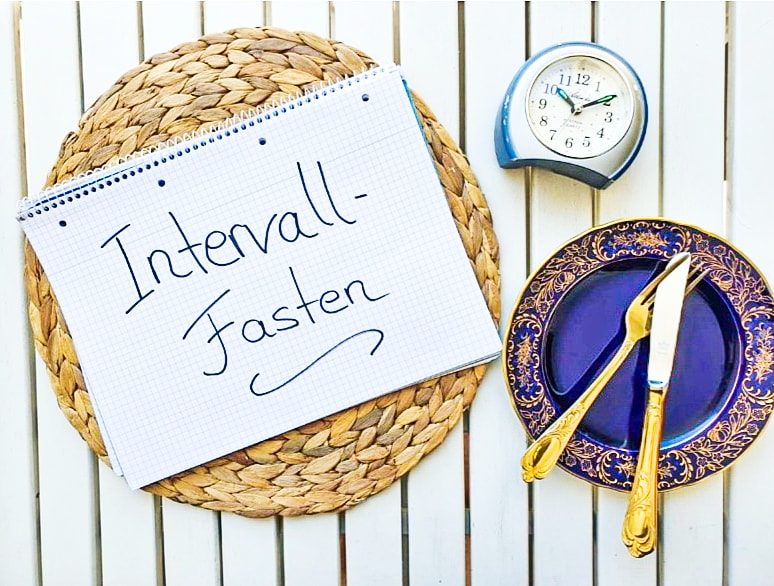
Move
After you have enjoyed your morning drink and started the day, exercise for 10 to 40 minutes, if possible in the fresh air. A walk in the forest, with sun, fresh air and the chirping of birds is ideal. Alternatively, you can swim, ride a bike or do some yoga.
By moving in the sun, your body burns fat reserves and your circadian rhythm – your internal clock – adapts to nature. You are also welcome to use the commute to work to save time and still benefit from the advantages mentioned.
Cold
After you have moved, you can freeze a little so that your white adipose tissue is converted into metabolically active, brown adipose tissue. This contains mitochondria and can generate heat, which is why it uses the white fat as an energy source.
For this conversion it can be a little uncomfortable for 2-5 minutes. An alternating shower with alternating warm and cold water or a cold shower works just as well as jumping into the nearby river, lake or an ice barrel (see Wim Hof method).
3. Agility
Mobility means being able to perform movements with a full range of motion. Because of too long sitting, one-sided training loads and stress, many people have mobility restrictions.
This leads to:
- Imbalances
- Bad posture
- Unilateral joint, muscle and tendon loads
- Restricted freedom of movement
To prevent this, you can use the following methods. It is best to do it 2-3 times a week:
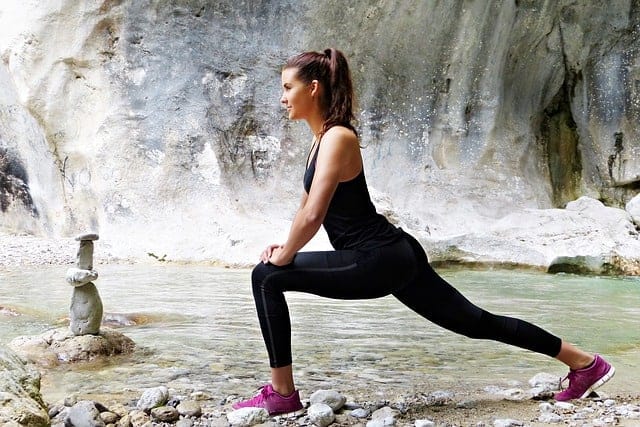
dynamic stride
Dynamic stretching means increasing your flexibility through active movements. This form of stretching activates the so-called muscle spindle reflex, which is why the stretches are not as strong as in classic static stretching .
However, dynamic stretching is much more suitable than warming up before exercise, as it increases performance afterwards, which is not the case with static stretching.
Suitable exercises are:
- Leg swings
- lunges
- Hindu push-ups
- Crawling
- roles
- Arm circles
You are welcome to do the exercises in the morning, in the evening or before exercise. A few leg swings, lunges and arm circles and the day can begin.
The Contract Relax method
This type of stretching works by tensing and relaxing the muscles involved and their antagonists (opposing players). You can do it with a physiotherapist or sports therapist as well as alone.
With this method, you first inhale and tense the muscle to be stretched or its opponent. Then you exhale and try to get deeper into the stretch. Some variants of this method are shown here:
4. Endurance
Endurance describes the ability to withstand a resistance mentally or physically for as long as possible. For the health of your cardiovascular system and the ability of your body to transport oxygen to the muscles and organs, endurance is essential.
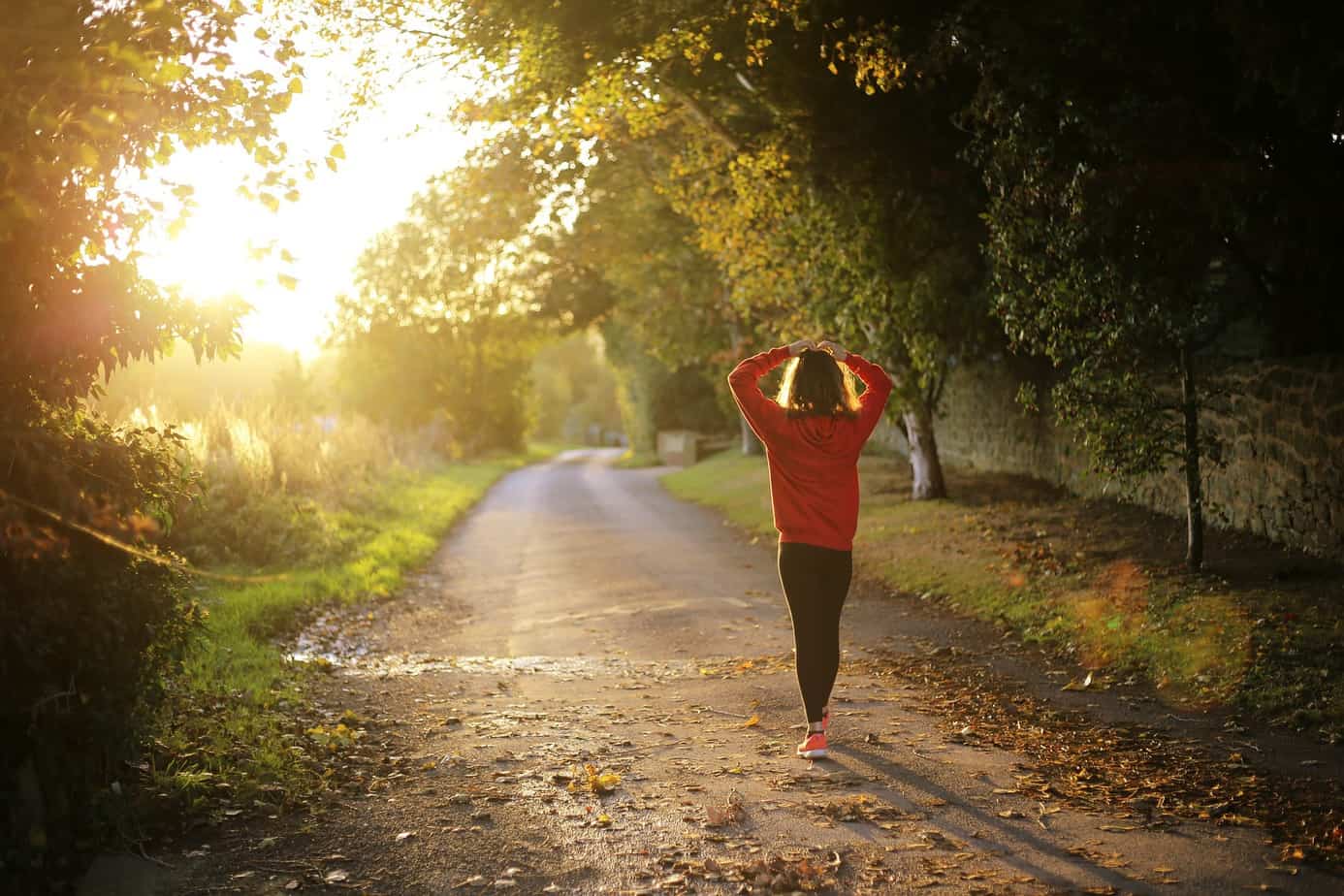
Tabata Training
One of the most effective methods to build endurance in the shortest possible time is the so-called Tabata method. Within 4 minutes you work 8 times for 20 s and take a 10 s break. If you do this 2-3 times a week, it is more effective than jogging 4 times for 30 minutes.
And this is how it works:
- Choose a full-body exercise such as push-ups, pull-ups, squats, lunges, sprints or burpees. You can also combine several exercises.
- Warm up for 5-10 minutes with dynamic stretching exercises.
- Perform the tabata: work 8 times for 20 s, 10 s break between the 20 s
- Do a 5-minute cool down with light activity. Further stretching, walking or crawling are possible here.
You can find an example of the Tabata training here:
Daily activity
In addition to active endurance training through Tabata, it is important to stay active throughout the day. Sitting for long periods of time has an unfavorable effect on your metabolism, you become less concentrated and develop bad posture more quickly.
If you move for at least 5 minutes within each hour, you counteract the negative influences and train your endurance at the same time. Standing desks, at which you frequently change your position, are well suited for short walks or jumping jacks, pull-ups, kettlebell swings ( kettlebell swings ) and squats.
5. Speed power
Speed and performance come into play with very explosive movements and enable you to cover a distance in the shortest possible time or to produce as much power as possible in a short time. In gyms and online workouts, these skills are rarely trained, although they keep you productive into old age.
In weightlifters, gymnasts and sprinters, speed and performance are very well developed. Therefore, you can copy some of their training methods to reap the same benefits. Possible exercises for this are:
- Jump with the skipping rope
- Jump on or off a box
- Sprints, either running or on an ergometer
- Medicine ball throws
- Kettlebell exercises
- Squat Jumps or jumping Lunges – these are simply squats or lunges where you jump with every repetition
You should use light to moderate weight for the exercises, do a maximum of 5-10 repetitions for 3-5 sets, and recover sufficiently after each set. You should also consider the following for speed and power training:
- Be completely rested and recovered. Fast movements are very stressful for your nervous system. Therefore, you should perform every exercise with full concentration.
- Train without getting tired. As soon as an exercise can no longer be performed at 100% intensity, take a break. Every movement should be as quick as possible.
- Move so fast that your head has to strain. This form of exercise should use your head, not your muscles. If you can still think about something else, perform the movement faster.
6. Force
Strength is the ability of your musculoskeletal system to produce the greatest possible strength and to apply it against resistance. This ability helps you to remain independent for a lifetime, to be able to carry your purchases home and to lend a hand.
full body exercises
For strength training, full-body exercises such as squats, pull-ups, push-ups, deadlifts, and strength and bench presses are best. A barbell with weights allows you to make easy progressions and excellent progress with only 2-3 short units per week.
If you have access to weights, just do the following exercises 3 times a week:
- 3 * 5 squats
- 3 * 5 bench or power press
- 5 deadlifts or 3 times as many pull-ups as possible
Do each exercise with the maximum possible weight that you can move that day. In the first few weeks it will increase very quickly.
If you don’t have access to weights, you can still benefit from the exercises. Do 3 sets of squats, pull-ups, and push-ups with as many repetitions as possible, 2-3 times a week. Your goal is to get more reps on each unit.
Single set to failure
For hotels with small fitness studios or if you only have access to training machines, the so-called single set to failure method is suitable for building up a lot of strength in a short time.
Find a push and pull exercise for the upper body and a leg exercise for the lower body. The bench press, lat pulldown or rowing as well as the leg press are ideal for this. Do only one set on each device with full commitment. With each repetition you move the weight up for 10 s and down for 10 s – so very slowly.
Stay focused and don’t get any faster with the exercises. You should be able to do 6-10 reps on each exercise and keep doing the 10 seconds up and down. Adjust the weight accordingly and increase it over the next few weeks of training. You can do this training 1-2 times a week.
Conclusion – Be fit and flexible for a lifetime and stay that way into old age
In order to stay fit into old age and to be able to play with your great-grandchildren , you should train the following:
- Perseverance
- Force
- Quick strength
- Agility
- Balance
- Metabolism
These skills help you to live with full freedom for a long time and to be very fit at the same time. 2 Tabata, once strength and once power training per week are completely sufficient. Combined with fasting, cold, some balance training and lots of exercise in everyday life, your fitness program for a long life is complete.

